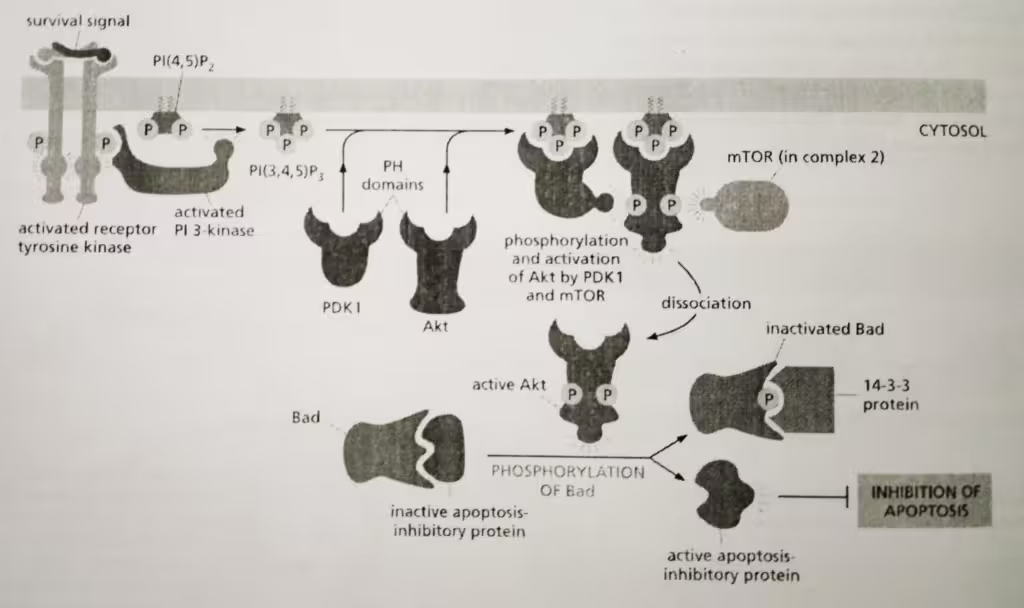Table of Contents
PI-3 kinase pathway is one of the activated receptor tyrosine kinases (RTKs) also initiate phosphoinositide pathway.
PI-3 kinase pathway- mechanism of action:
PI-3 kinase binds to the phosphotyrosine residues in the cytosolic domain of activated Receptor tyrosine kinases (RTKs). PI-3 kinase catalyzes the formation of PI 3,4- biphosphate or PI 3,4,5 triphosphate which act as docking sites for various signaling transducing proteins.
There are various types of PI-3 kinases. Some PI-3 kinases are activated by the βγ complex of trimeric G-protein when GPCRs are activated by their signals.
Protein Kinase B (PKB)’s role in this pathway:
A primary target of PI 3,4,5-triphosphate is Protein Kinase B (PKB), a serine/threonine kinase. Besides its kinase domain, PKB contains a PH (Pleckstrin Homology) domain that tightly binds the 3-phosphate in PI 3,4,5-triphosphate.
In an inactive form, PKB (also called Akt) is present in the cytosol. In case of a rise in PI 3,4,5-triphosphate, PKB binds to the and is localized at the cell surface.
PI 3,4,5-triphosphates also recruit kinase, PDK1 ( Phosphoinositide-dependent Protein Kinase 1), to the plasma membrane via binding of its PH domain. Active PDK1 induces phosphorylation of PKB. Completely activated PKB then dissociates from the plasma membrane and phosphorylate it’s many target protein.
Schematic representation:

The diagram, below, represents the role of PI-3 kinase pathway in the cell survival:

Other related notes:
- RAS-MAP kinase pathway: https://thebiologyislove.com/ras-map-kinase-pathway/
- Insulin signaling Pathway: https://thebiologyislove.com/insulin-signaling-pathway-pi-3-kinase-pathway/
Facebook link: https://www.facebook.com/share/p/JRM9hVAhUS5hJ9ZR/?mibextid=oFDknk
Instagram Link: https://www.instagram.com/p/C8CSoIhSx0I/?igsh=YXcwZDY1YTVhbm4x

